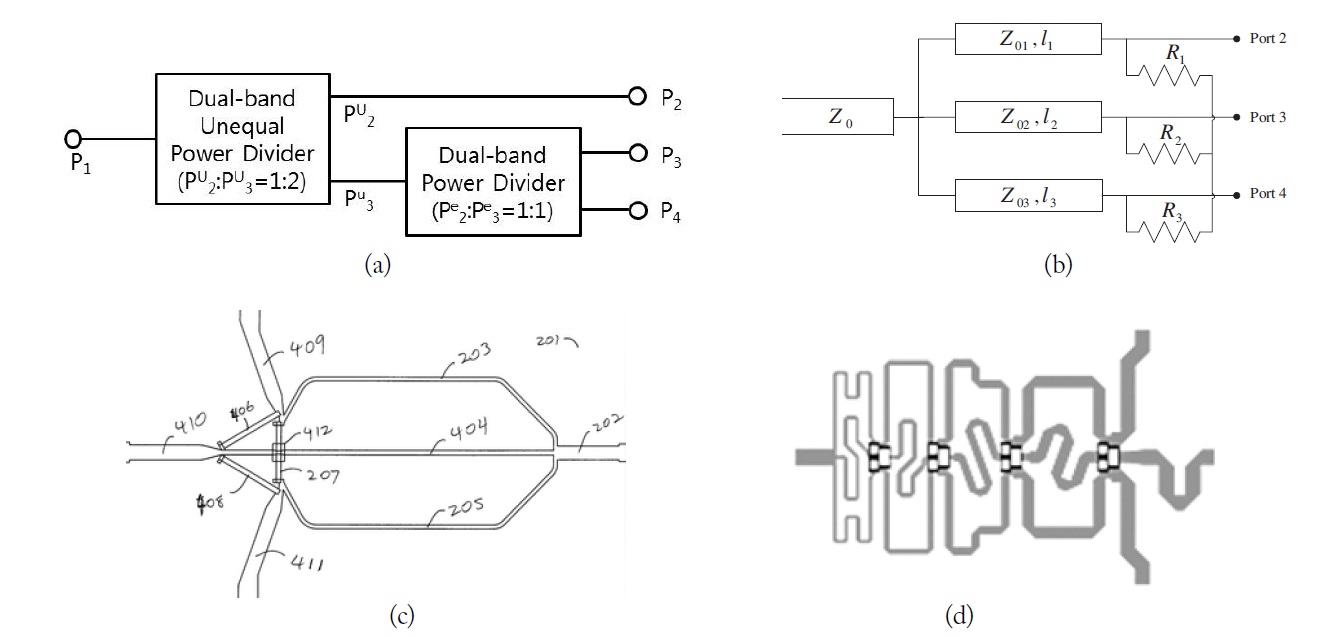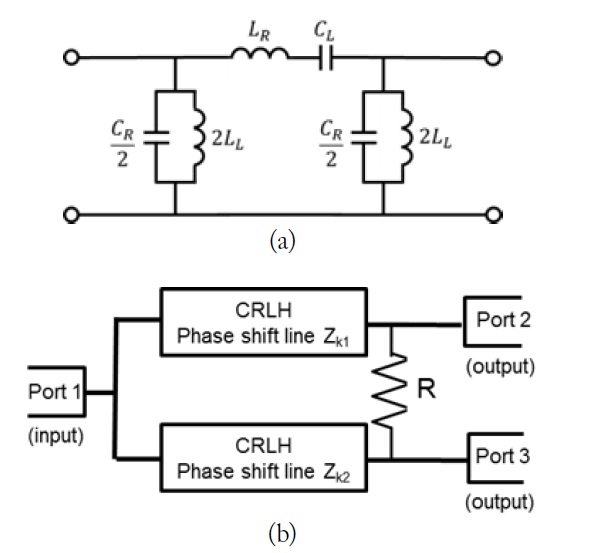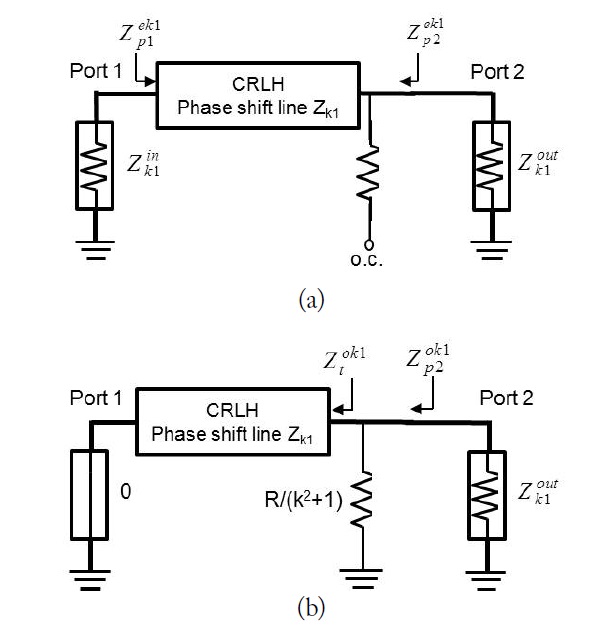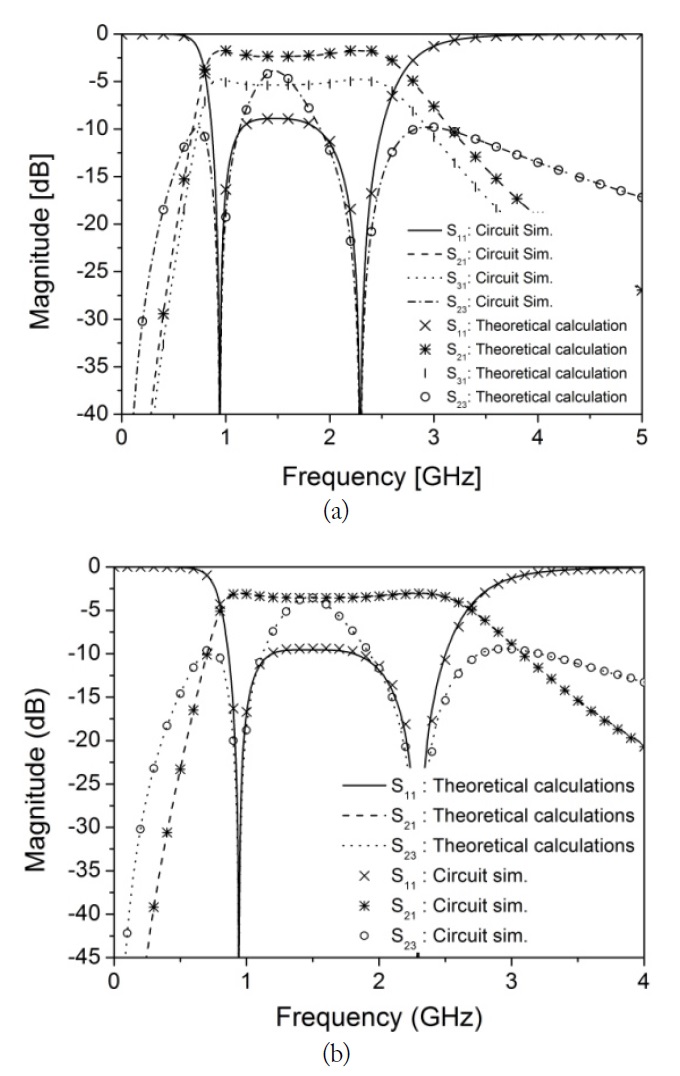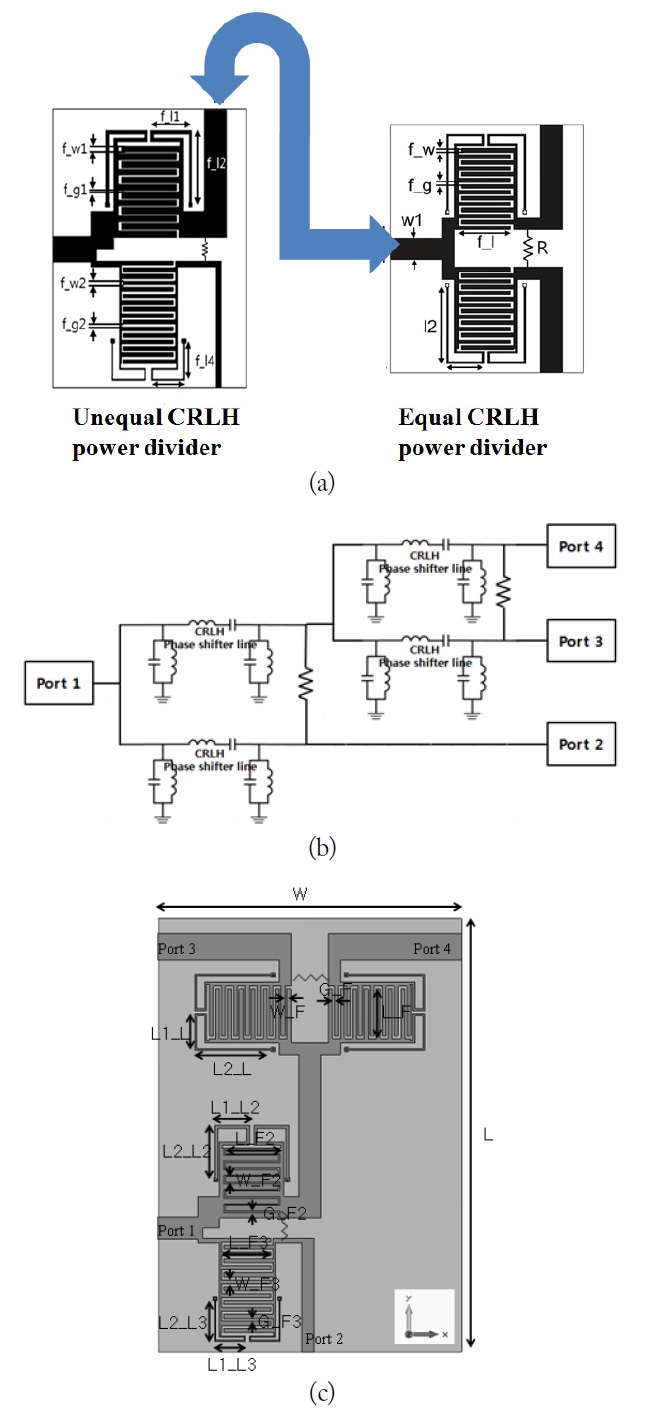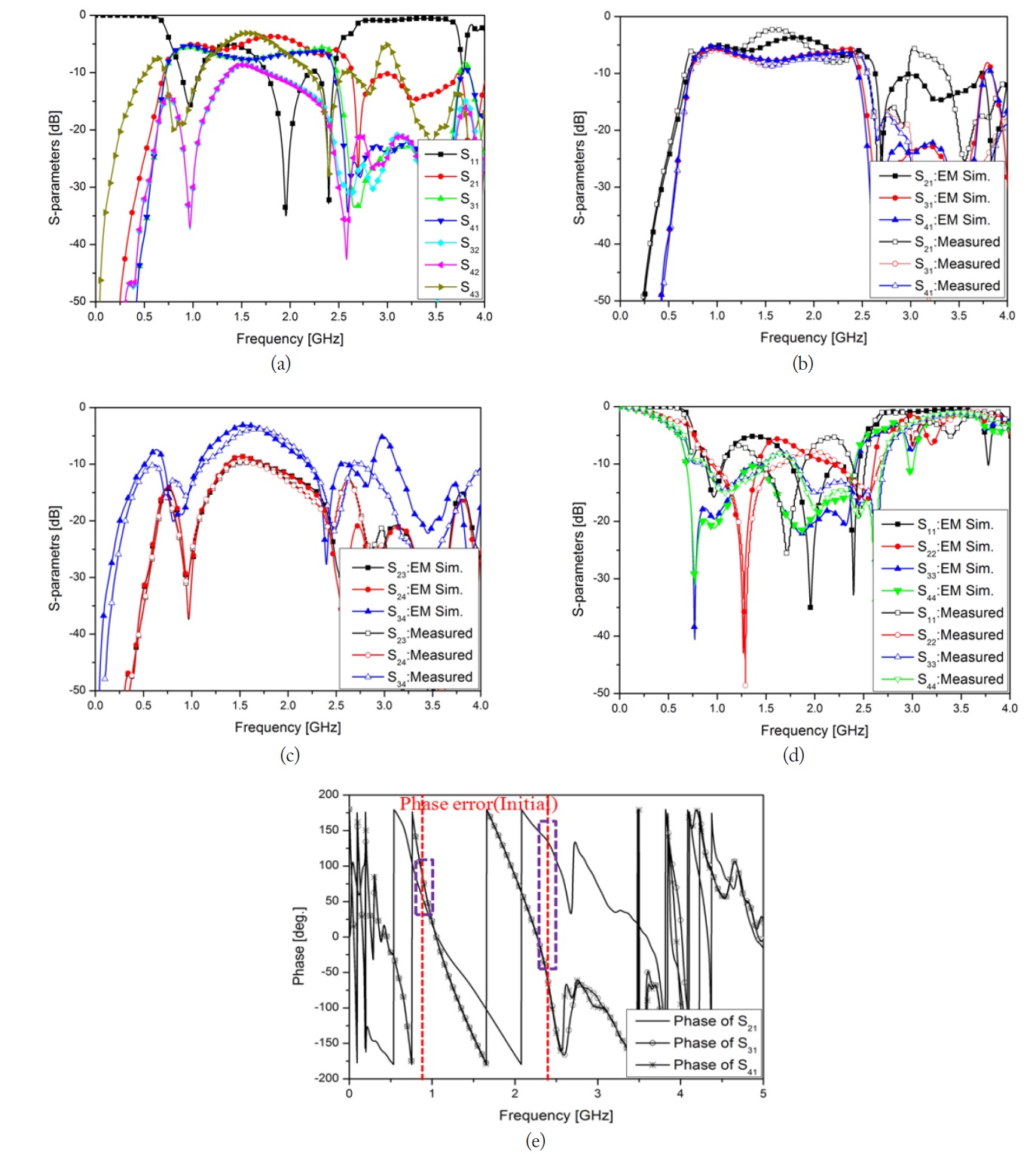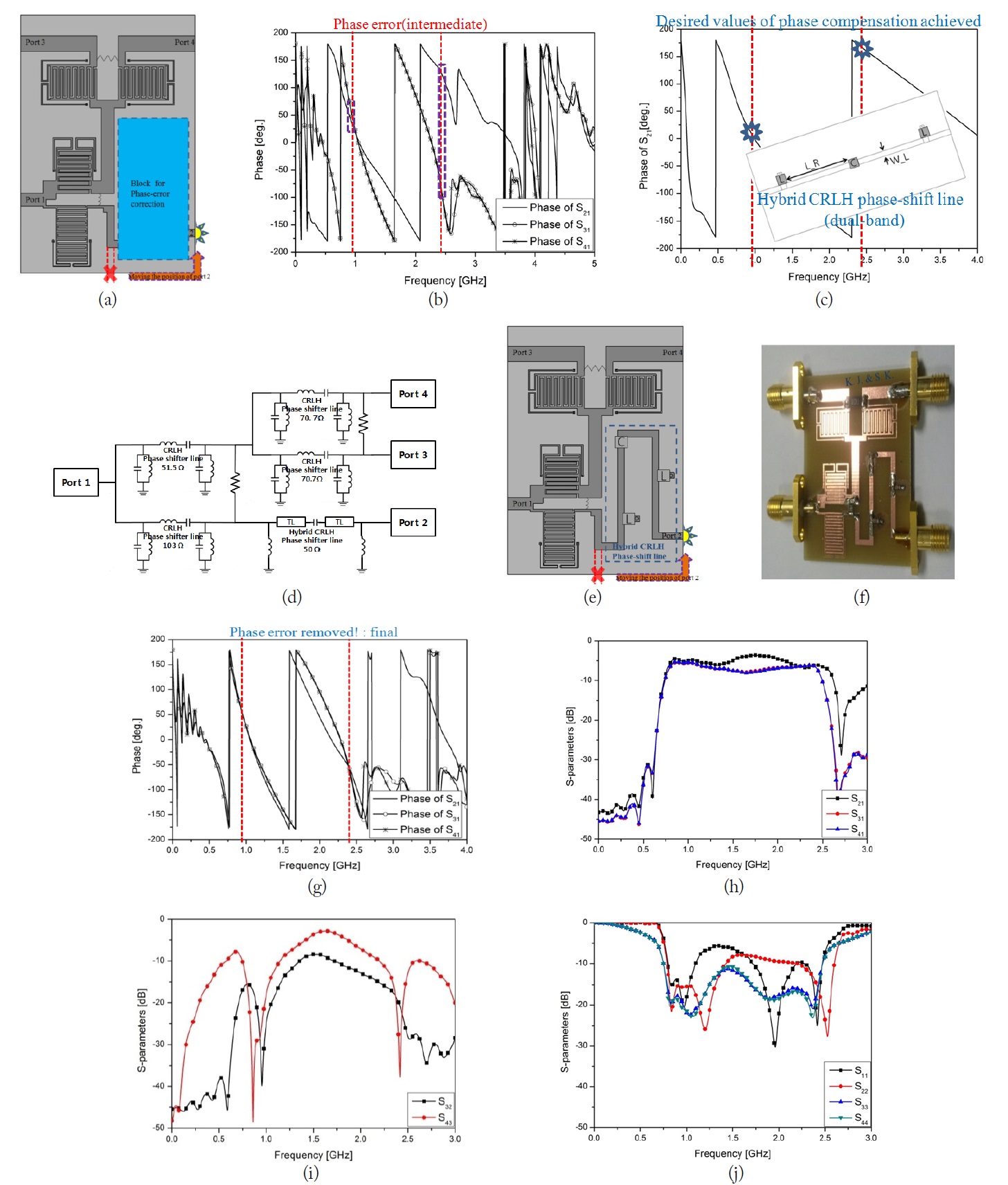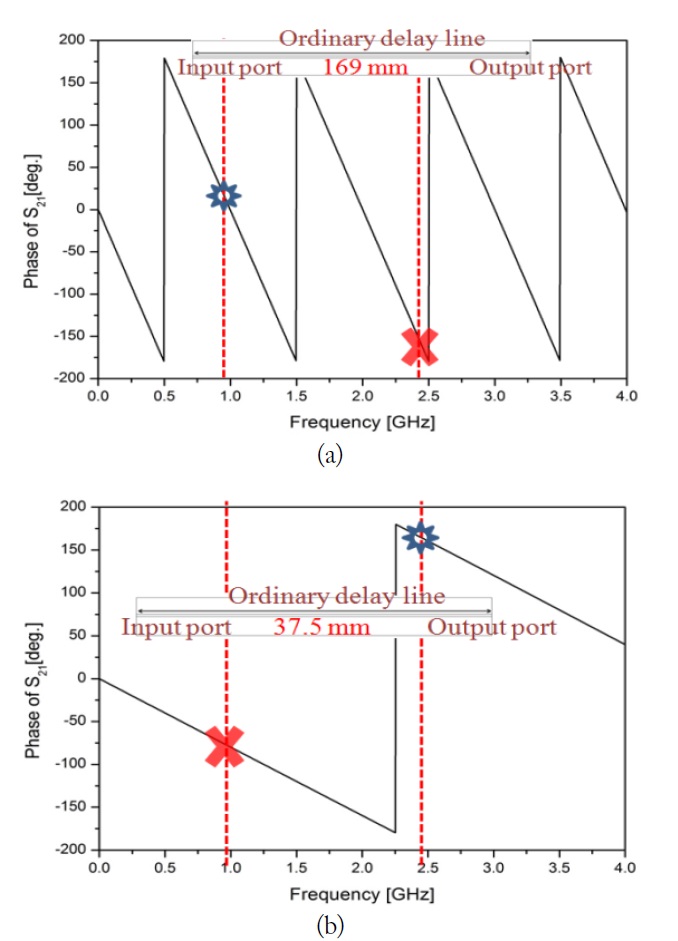



Every wireless communication system incorporates microwave power dividers, couplers, filters, and relevant parts [1-5]. In particular, since one path has to be branched (i.e., as found in an array antenna or comparator), the power divider is required at the junction between the route on one side and several ways on the other side. The rapid growth of the telecommunication industry has prompted microwave technologies to push the envelope to meet users’ demands, and power dividers have been developed to cope with the multiple bands for system integration, wide bands for broadband service, etc. [6,7]. While achievements have been made in diversified and upgraded functions of the radio-frequency (RF) equipment, the constraints placed on the physical size have become the developers’ main concern. The response to these design priorities has been to focus a great amount of research on the production of size-reduced advanced power dividers, created by bending and folding, cascaded multi- stages, grid array, slot coupling between layers, R-L-C loads, etc., without loss of generality [8-11].
These conventional techniques, although prevalent, have the limitation of loss from multiple stages, restrictions in embedding a confined space, and higher cost due to stack-up fabrication. Alternative methods have been sought to iron out these problems, which have attracted substantial attention from the RF community [12-16]. For example, Caloz and Itoh [12] introduced composite right- and left-handed (CRLH) transmission lines; their attempts to realize the then-fancy phenomena of the backward wave, left-handed propagation, non-linear dispersion, and zeroth order resonance (ZOR) resulted in a long periodic geometry that comprised 24 cells of distributed elements [12]. They successfully demonstrated its metamaterial characteristics, but this geometry was too large for incorporation into a device. Hence, many cells of lumped elements were cascaded in series to generate +90° or -90° and were attached to the arms of couplers and power dividers. Similarly, Marques et al. [13] formed a pair of slot rings under each of the arms of the Wilkinson power divider for the purpose of reducing the overall size. Inoue et al. [14] introduced an LTCC CRLH-type component similar to the lumped element-based multiple cells. A printed and small power divider with a metamaterial-inspired T-junction was shown by Saenz et al. [15], but it lacked a theoretical aspect, and its applicability to current challenges is doubted.
This paper proposes an improved method for fabrication of a smaller and more advanced component that will overcome the drawbacks of earlier metamaterial and ordinary approaches. A novel three-way dual-band CRLH power divider is designed to have a very small footprint and the equal power division and in-phase outputs. Differing from [16], a CRLH and short three-way dual-band power dividing structure is presented that provides a dual-band phase-error correction line. The solution process starts from the separate implementation of the 2:1 unequal and 1:1 equal power dividing blocks that are fully printed and metamaterials. This is followed by plugging the inputs of the equal block into an output of the unequal block for an initial 1:1:1 power divider, and slightly tuning the interconnection segment. This initial configuration and its possible modification inevitably give rise to phase errors between the outputs. Hence, we need a phase compensation line that works for the dual-band objective, but this is difficult to obtain only with the ordinary delay line for the single band or its harmonic relations. The dual-band phase compensation is accomplished by a hybrid CRLH phase-shift line as a mixture of the distributed and lumped elements, for the sake of efficiency and convenience. The design method is validated by evaluating the proposed metamaterial structure by circuit analysis and full-wave simulation in the solution process. This novel 1:1:1 power divider is manufactured through a low-cost fabrication with an inexpensive cheap substrate and its performance is measured to confirm its desirable power division ratio and equalized phases at the output ports, especially considering that its physical placement is friendly to RF system layouts. Its size-reduction effect and technical applicability are also addressed.
Ⅱ. THE PROPOSED CIRCUIT CONFIGURATION AND DESIGN OF ELEMENTARY BLOCKS
A novel, compact three-way power divider with CRLH characteristics is schematized in the following figure and compared to three examples that used other techniques.
Fig. 1(a) shows the composition of the proposed structure. The unequal power divider block is sequentially combined with the equal block, and both blocks are realized as printed CRLH devices with small footprints. Fig. 1(b) is an extension of the Wilkinson power divider to three ways, but has a single band. Elongated segments are added to the first stage in Fig. 1(c), and four stages are placed in chain in Fig. 1(d). Fig. 1(b)-(d) heavily depend on the quarter-wave long arm for each stage, with extra delay lines, but fail to achieve effective size-reduction. However, since a dual-band CRLH phase-shift line will be substituted for the single-band and quarter-wave long arms of the traditional Wilkinson power divider, Fig. 1(a) will be appropriate for the present objective.
The equivalent circuit of the aforementioned phase-shift lines for the dual-band unequal and equal power divider blocks shown in Fig. 1(a) is set up as follows.
Fig 2(a) is used to create phase
where
Fig. 3(a) shows the phase as desired after applying
Keeping in mind the connection to the equal block afterwards (to make the three-way power divider), the present unequal block should have the power division ratio of 2:1 with
Fig. 4(a) comes from Fig. 2, as ports 2 and 3 are excited with the in-phase signals and the bi-section line is treated as an open-circuited state. Fig. 2 becomes Fig. 4(b), in the assumption that the out-of-phase signals are fed into ports 2 and 3, and the axis of anti-symmetry is considered short-circuited. This applies to both the impedance lines. The frequency response of Fig. 2(b) will be given in the form of S-parameters, and the Z-parameters should be arranged for Fig. 2(a) and Fig. 4 in the first place. The series and shunt resonators in Fig. 2(a) are
With these, the diagonal and off-diagonal elements of the Z-parameter matrix for the CRLH phase-shift line can be written as
The input impedance of the CRLH phase-shift line (the box in Fig. 4) is then obtained as
Z
where
For the equal block,
As long as the impedance matrix is completed, the corresponding
All the necessary
The predicted performance of the 2:1 unequal power divider is shown in Fig. 5(a), where |
In this section, the unequal and equal blocks are interconnected to form the three equal outputs, and realized and tested in a full-wave simulation. One output is different from the remaining outputs in terms of phase for each of the two frequencies; therefore, the phase correction will be attained in an efficient way.
The unequal and equal power-dividing circuits of Figs. 4 and 5 are physically implemented by following the steps of [16] to consider full-printing, and the input of the equal block is fed by the output of the 103-Ω path of the unequal dual-band power divider.
Fig. 6(a) and (b) illustrate how to connect the unequal dual-band power divider to the equal block. In accordance with this scenario, the initial shape of the fully printed CRLH three-way dual-band power divider is presented as in Fig. 6(c). The geometrical parameters of the two blocks remain almost unchanged from those of the structure of the 1:1:1 power-divider except for the addition of the connecting part: W, L1_L, W_F, L_F, L2_L2, G_F2, L1_L3, W_F3, L_F3, L, L2_L, G_F, L1_L2, W_F2, L_F2, L2_L3, and G_F3 in Fig. 6(c) are 30.6, 3.5, 0.4, 5, 5.3, 0.1, 3.1, 0.4, 5, 43.7, 7.5, 0.2, 3.5, 0.6, 5.6, 4.1, and 0.3 mm, respectively, with FR4 of
In Fig. 7(a) and (b), equal power division to the 3 output ports is achieved with nearly -6 dB of |
The old port 2 in Fig. 7(e) is relocated, as shown in Fig. 8(a). A test line is inserted in the box to connect the output of the 103-Ω path of the unequal block to the new port 2, and the phase errors (
where
The ordinary delay line is not able to achieve
This paper proposes a small sized three-way power divider with a 1:1:1 power division and in-phase outputs to work for two frequencies. It consists of 2:1 unequal and equal dual-band power dividers that are fully printed CRLH building blocks and incorporated to make a compact device to divide one RF input power into three ways. In particular, the phase errors between port 2 and ports 3 or 4 at 960 MHz and 2.4 GHz are observed in the initial three-way power divider, and they have been compensated for to equalize the output phases by designing a hybrid CRLH dual-band phase-shift line. The suggested method is shown to be valid through circuit analysis based on the derived equations, a full-wave simulation, and the measurement of the fabricated prototype. The overall size is much less than that of Wilkinson and modified power dividers. This method is applicable to the designs of advanced power dividers.
